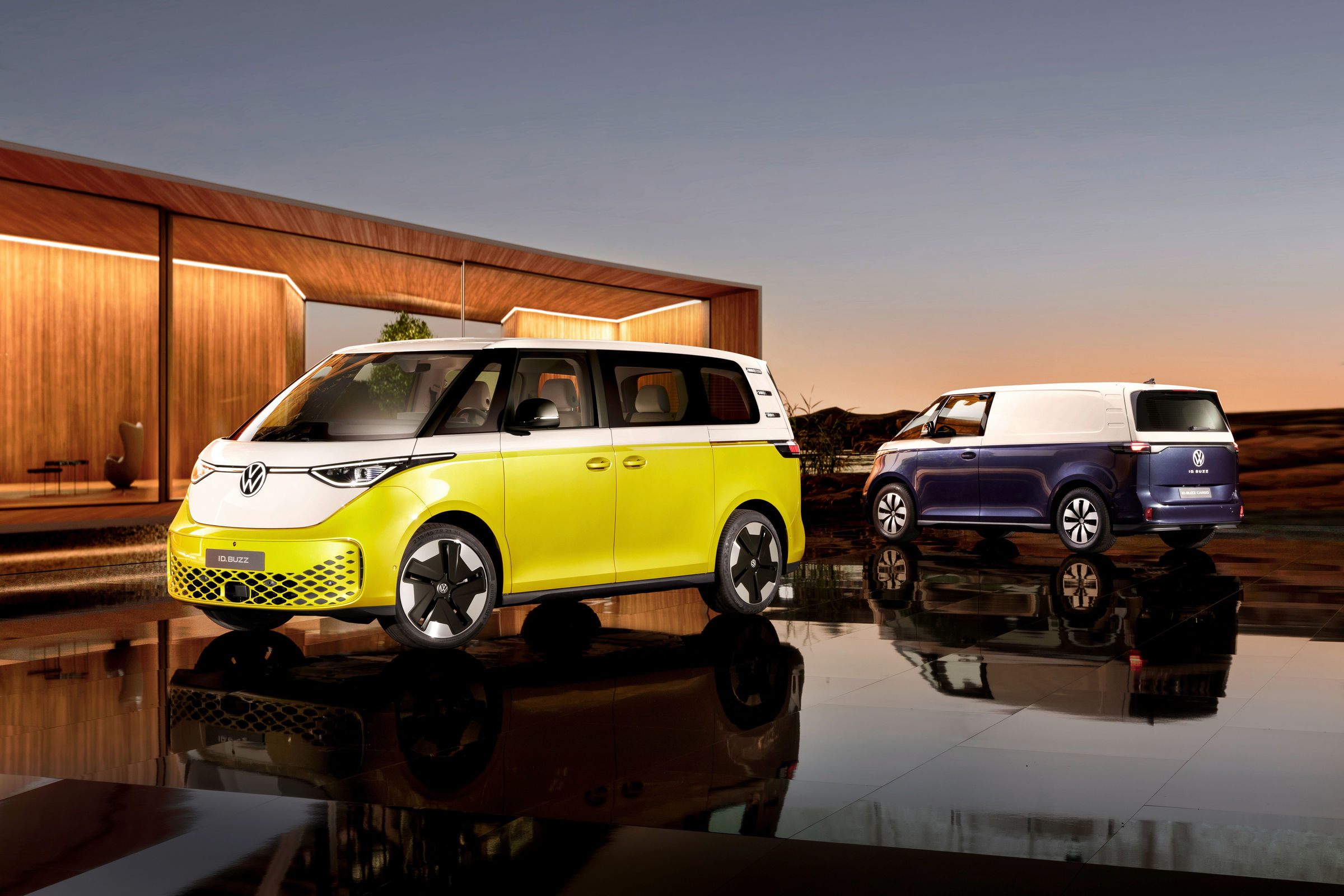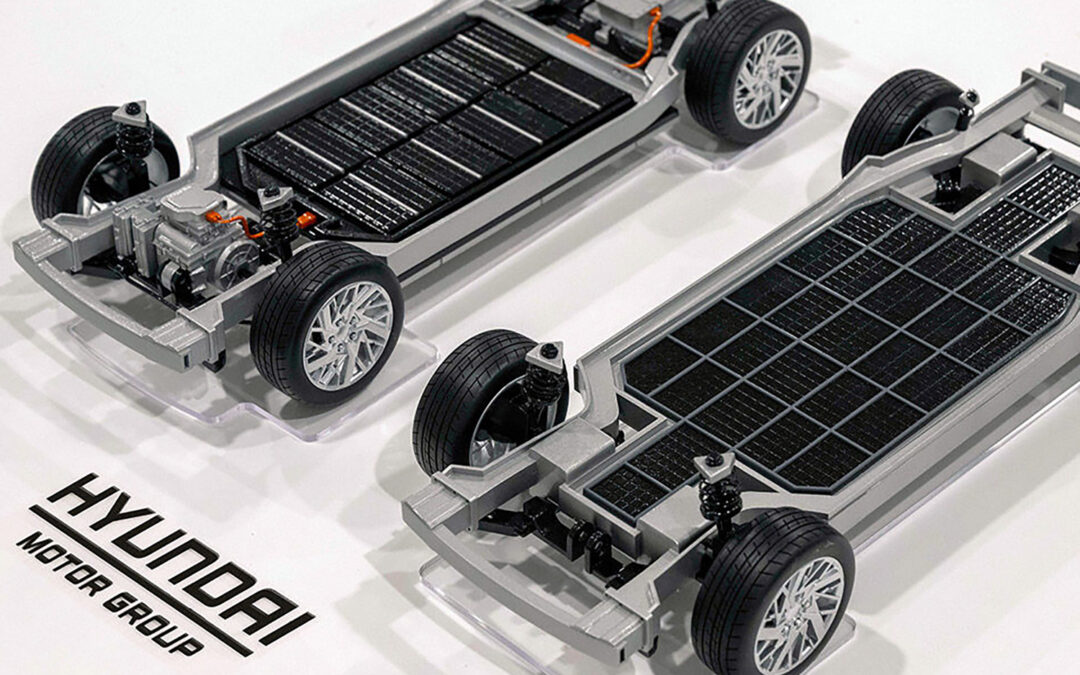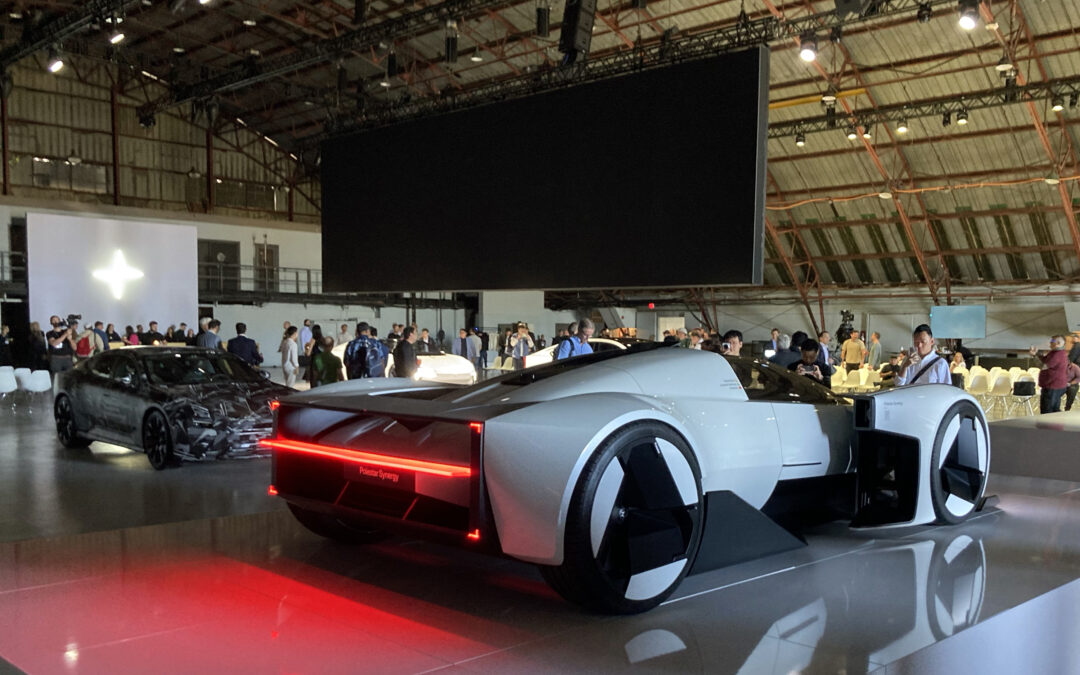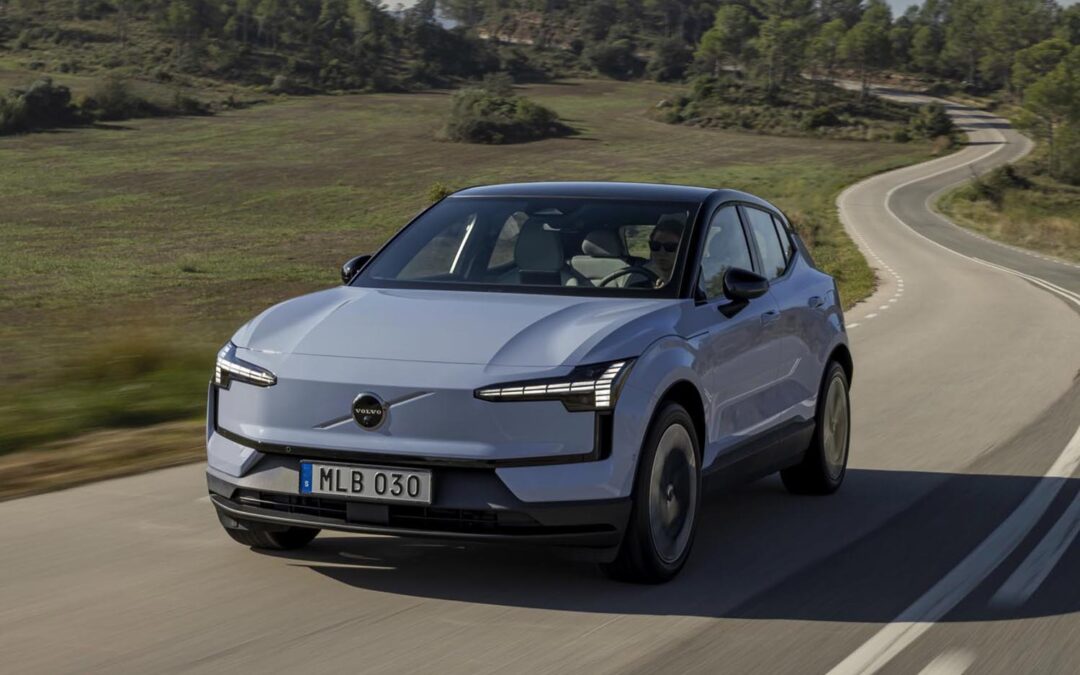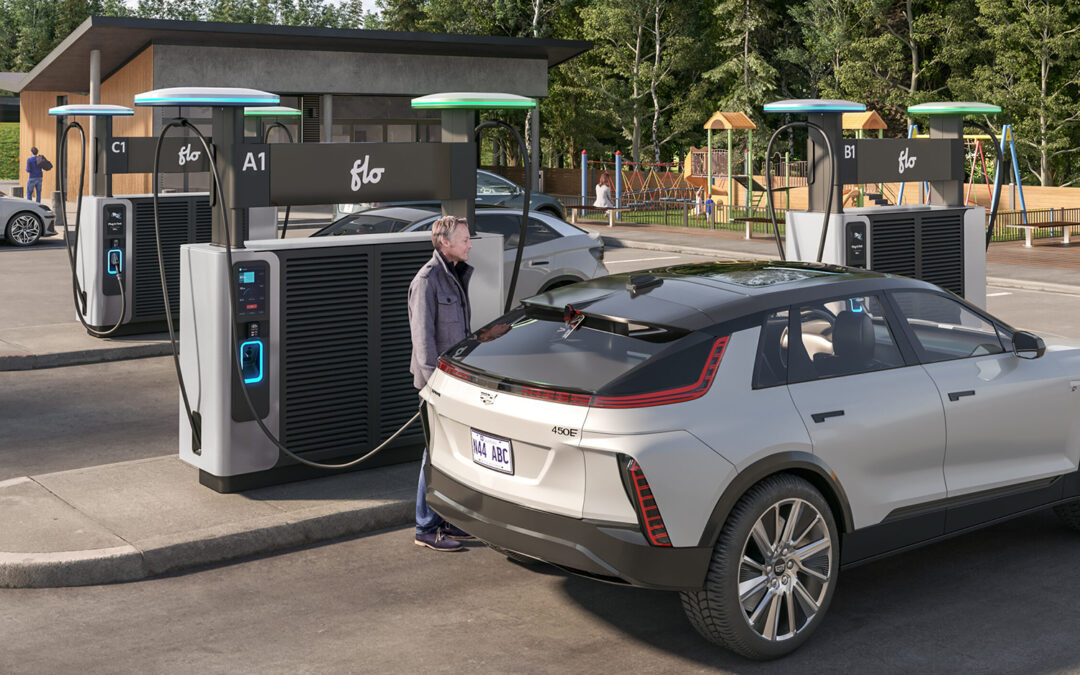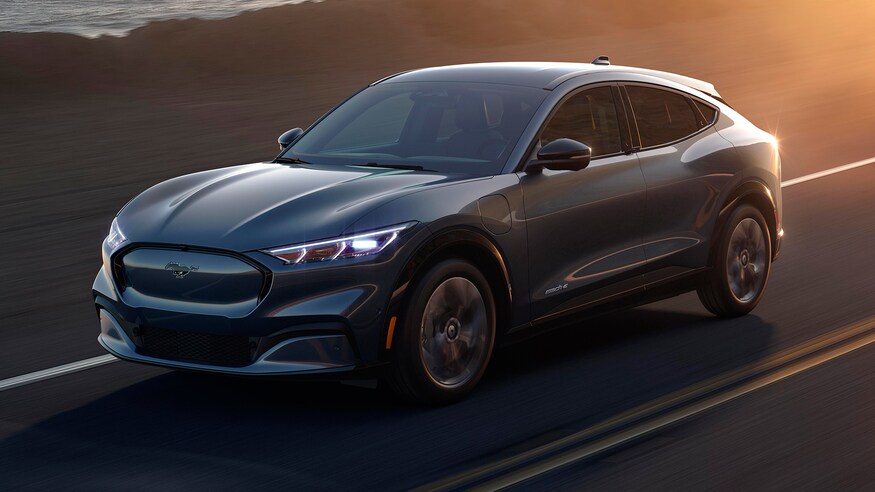Volkswagen this afternoon has revealed two configurations of what the brand is calling “the new face” of its “future-orientated” zero-emission line-up: the passenger-spec ID. Buzz and the commercial-orientated ID. Buzz Cargo.
Based on the T1 microbus of 1950, and consequently dubbed “the most emotional member” of Volkswagen’s all-electric ‘ID’ range to-date, the new ID. Buzz will be available in Europe later this year with a seven-seater, ‘Extended Wheelbase’ version set to introduced in 2023. The version has also been earmarked as the North American launch edition in 2024.
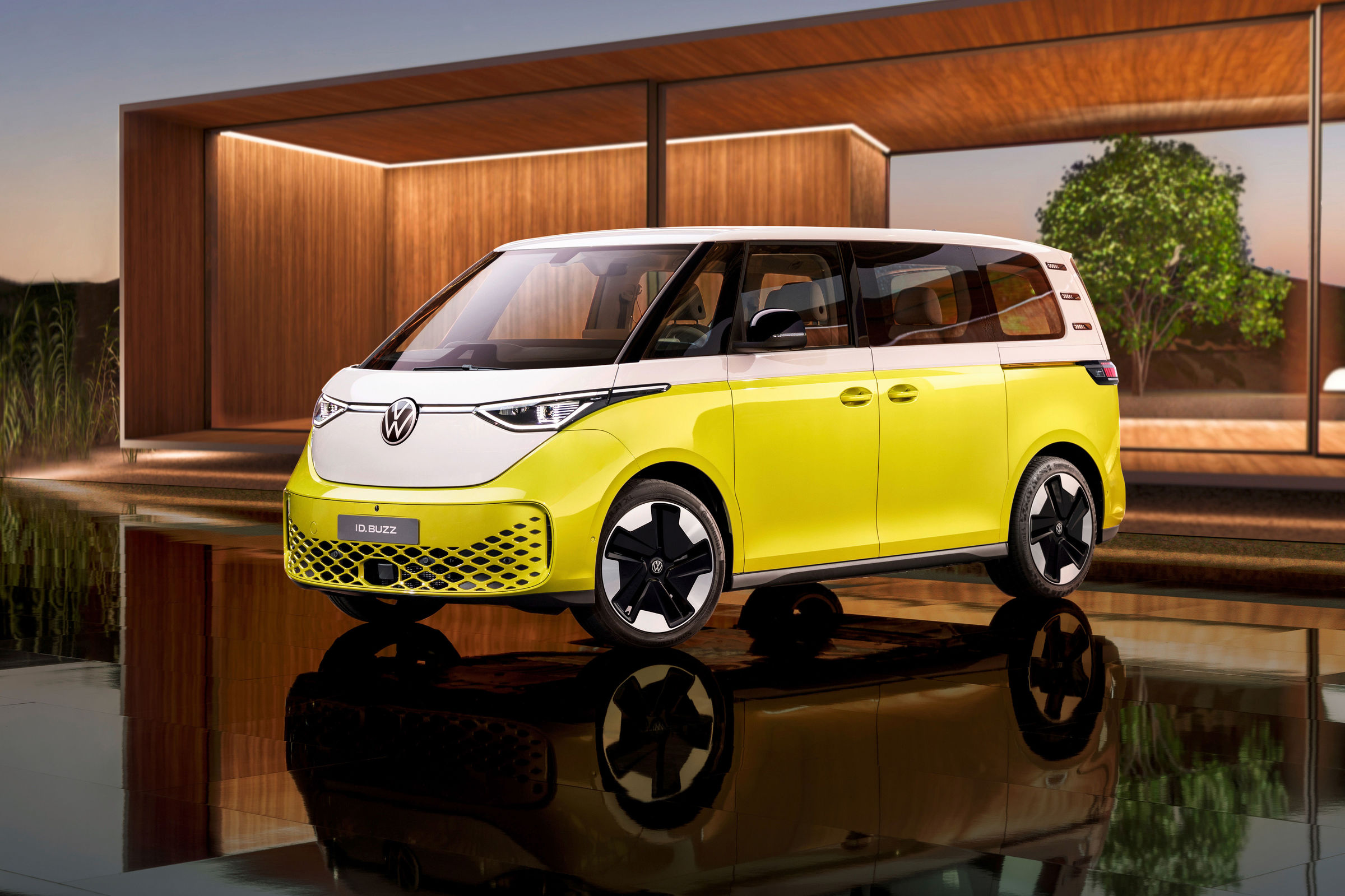
Volkswagen ID.Buzz
The Buzz will be built at Volkswagen’s Hannover plant in Germany alongside its Multivan range. Interestingly, while the battery pack is currently manufactured at VW’s neighbouring Braunschweig facility, assembly will be moved to the Hanover facility long term as part of VW’s €100 million (a little under $142 million) overhaul for EV assembly, an investment that also includes construction of a dedicated battery system assembly station.
Power for the launch models comes from a rear-driving electric motor that produces 150 kW / 201 hp and 229 lb-ft of peak torque, though later models boasting “various power output levels” are scheduled to arrive by 2023. In a fitting tribute to the ‘leisurely’ T1, top speed for both models has been electronically limited to 145 km/h.
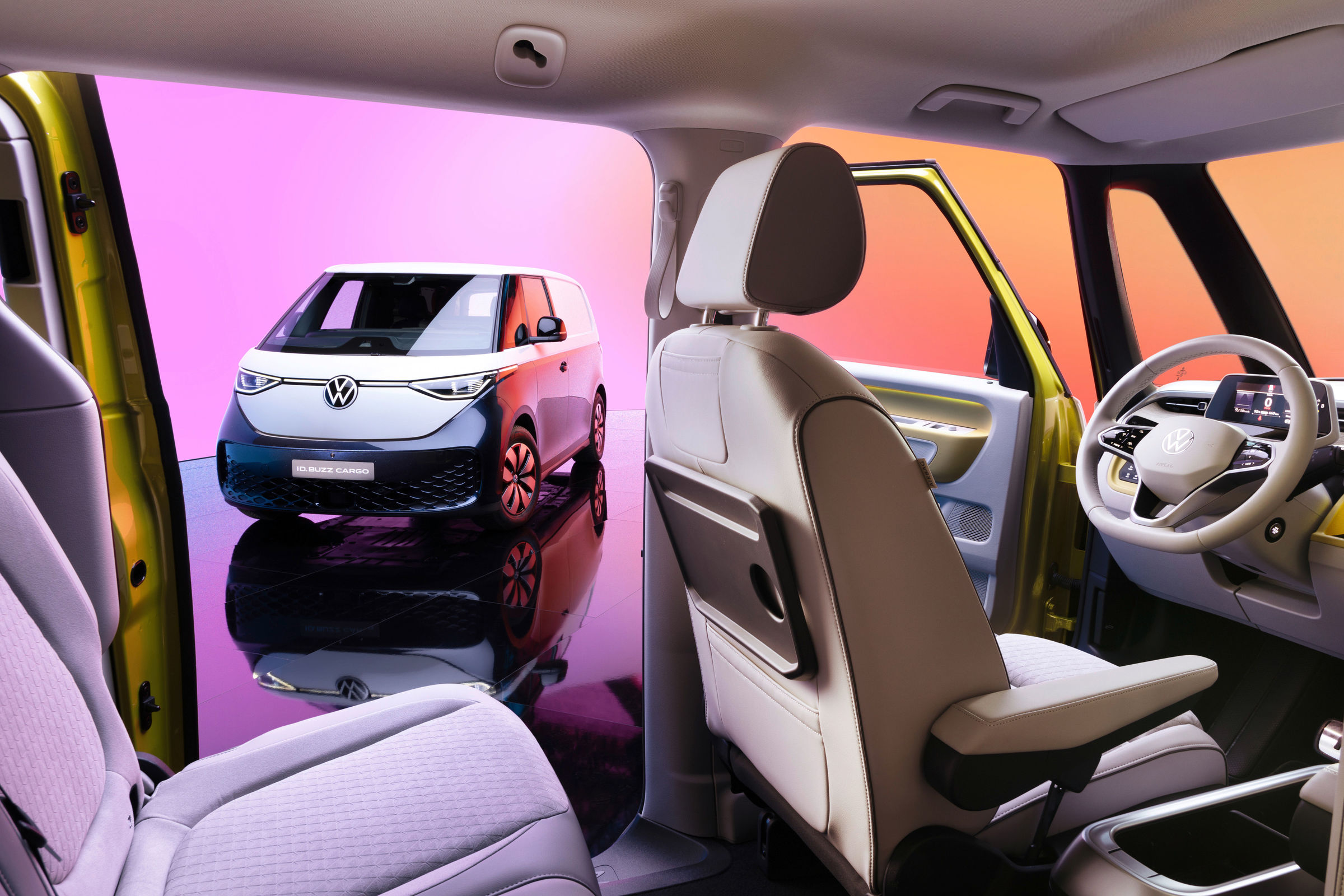
Volkswagen ID.Buzz
An estimated driving range has yet to be revealed, though VW has confirmed that the charging rate can be as high as 170 kW, meaning a DC fast-charge will top the 82 kWh lithium-ion battery pack from 5 per cent to 80 per cent in just 30 minutes. In an effort to preserve the as-of-yet unknown range, the Buzz can be purchased with an optional heater, which warms the interior using heat radiating from the vehicle’s electrical componentry rather than the battery itself.
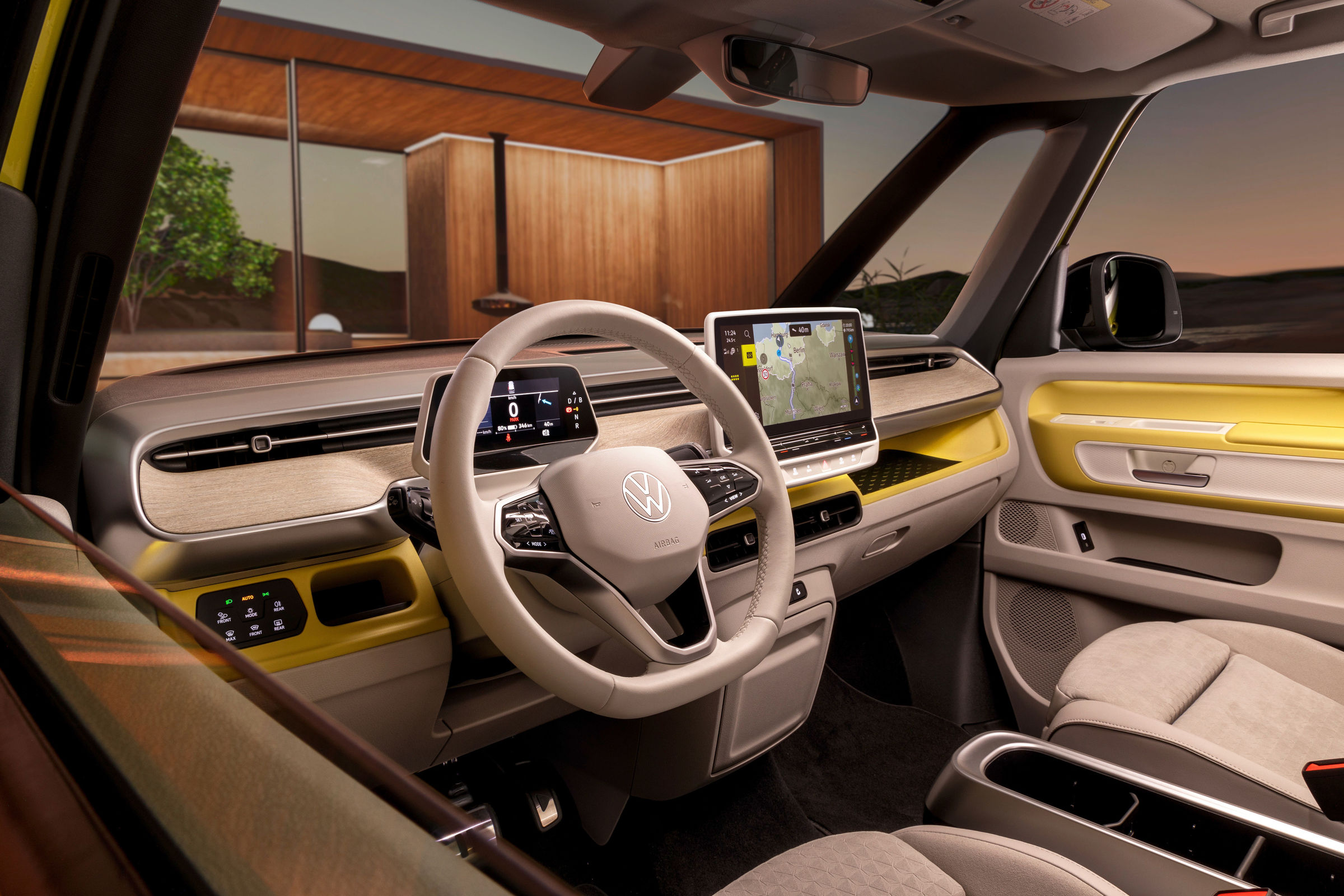
Volkswagen ID.Buzz
Following high customer demand, VW has also confirmed that the ID. Buzz will feature the ‘Plug & Charge’ program – a system that shortcuts authentication from the driver and begins recharging automatically when the cable is connected – and, for European owners to begin with, bidirectional charging. Volkswagen Group CEO Herbert Diess recently confirmed in an ‘Ask Me Anything’ session that both programs would made be made available to ID.4 owners in an ‘over the air’ update this summer.
Both the Buzz and the Buzz Cargo are built on VW’s EV-dedicated modular electric drive matrix (MEB) architecture to optimize body rigidity and practicality: the battery pack is mounted flat to the floor between the front and rear axles, increasing interior cabin space and lowering the centre of gravity simultaneously for more agile handling. The MEB currently underpins 30 per cent of the Volkswagen Group’s electrified line-up, with this figure set to increase to “more than 80 per cent” by 2025.
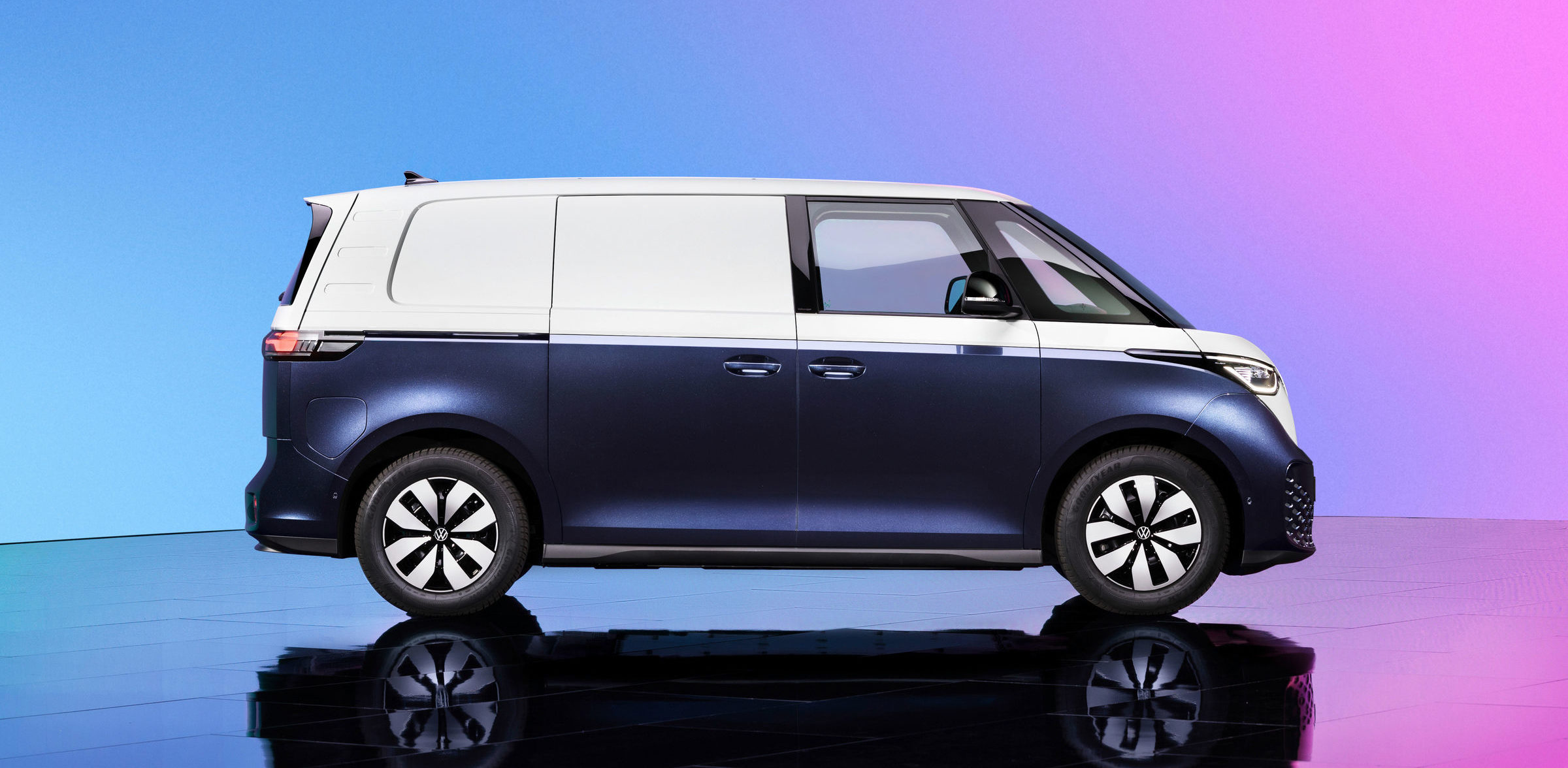
Volkswagen ID.Buzz
Both the ID. Buzz and ID. Buzz Cargo measure 4,712 mm (15.4 ft) in length, 1,985 mm (6.5 ft) in width, and currently sit on the 2,988 mm (9.8 ft) ‘Standard Wheelbase.” Both also stand around 6.5 ft tall, though the passenger-focused Buzz is a microscopic 1mm shorter than the Cargo thanks to “slight differences in the chassis” and the former’s “generous” array of glass windows compared with the latter’s panelled walls.
Unsurprisingly, with the Buzz’ design “successfully transferring the genes and stylistic elements of that iconic vehicle into the digital era”, homages to the 1950 T1 microbus include short overhangs, two-tone paint, a v-shaped ‘hood’ between the headlights, and a front-mounted VW logo considerably larger than any other model. VW head of design Jozef Kabaň though states that the brand “very consciously ensured that [they] were not making another T1” but was, instead, transferring the T1 DNA to the present day.”
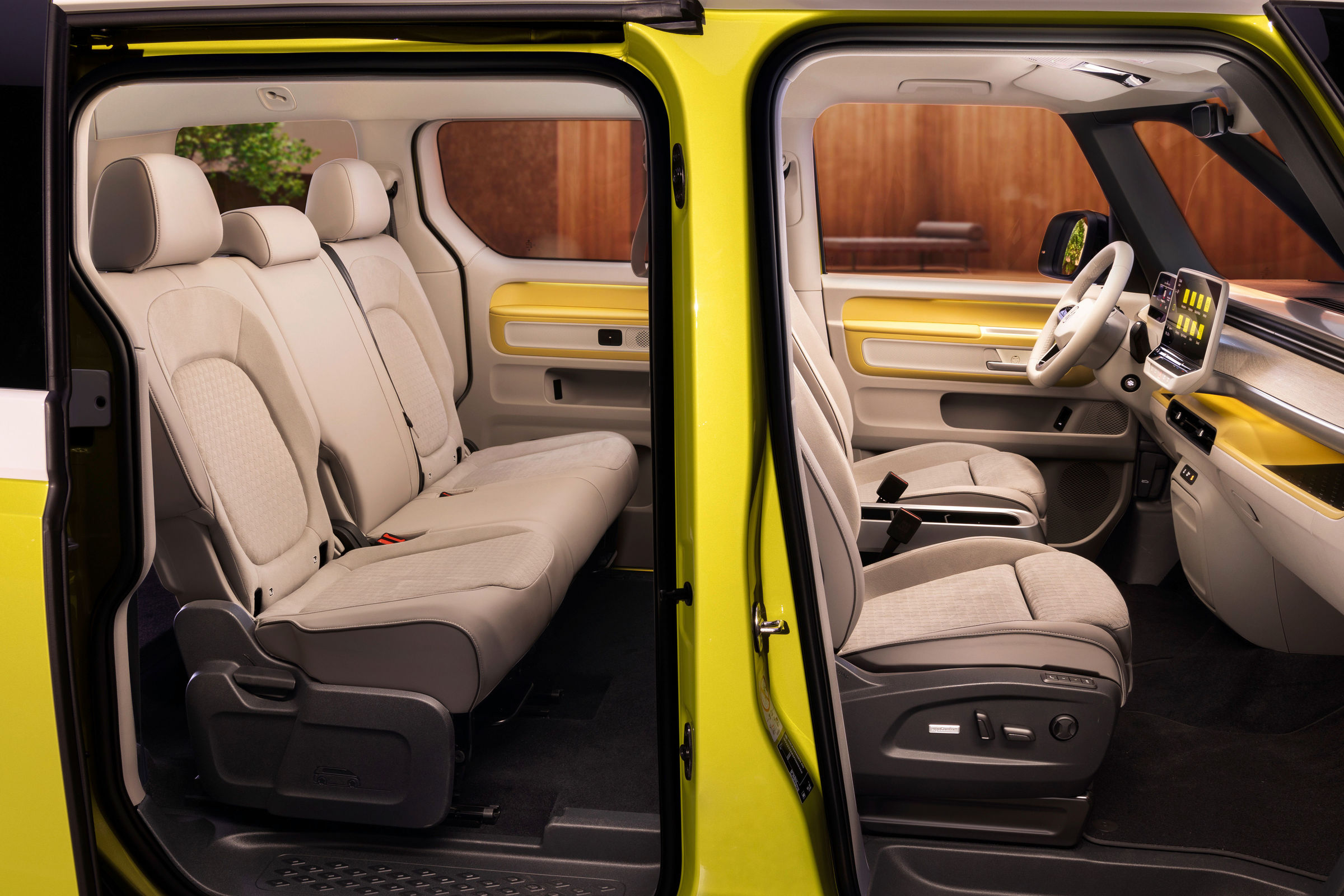
Volkswagen ID.Buzz
Consequently, the Buzz design more closely resembles the concept model that debuted at the Detroit Motor Show in 2017, the most pronounced example of this are the LED strips, which run between the headlights at the front and act as a pseudo daytime running lights, and the horizontal strip lights at the rear, which connect for the first time on a Volkswagen Commercial Vehicle.
Both the Buzz and the Buzz Cargo run as standard on 18-inch wheels, though optional available sizes range from 18 to 21 inches.
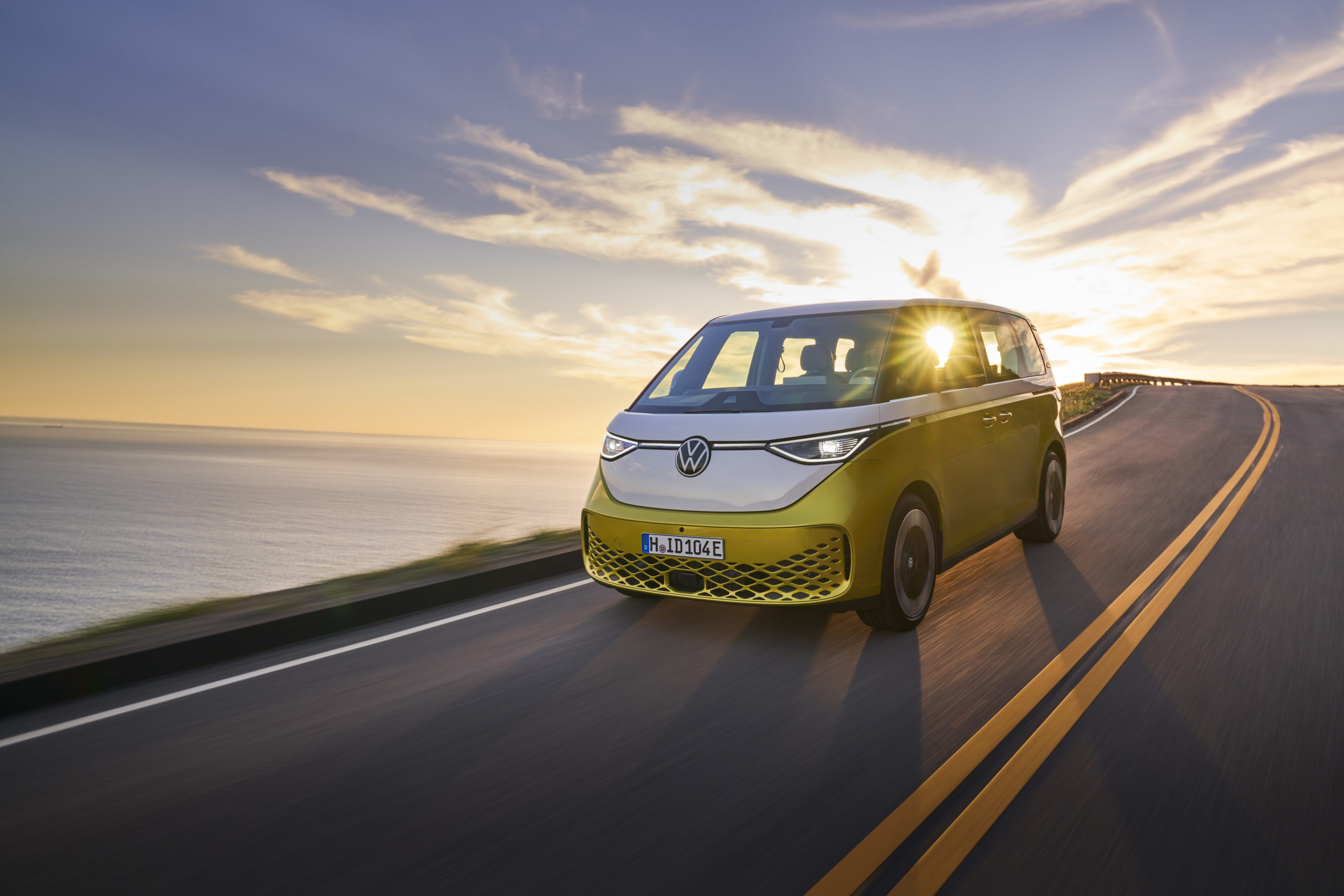
Volkswagen ID.Buzz
Inside, the cabin will be launched in five-seater trim, including two front passenger seats and a rear bench, with a six-seater example – front and rear benches – due at a later date, though no fixed timeframe has been established. The 2023 (North America, 2024) Extended Wheelbase will feature seven seats in two-three-two bench configuration.
While further homages to the T1 in the cabin include a silhouette of the vehicle embossed on the side and seat panels, the design is more high-tech and ergonomically orientated. Arguably the most noteworthy elements include the 10-inch (as standard) digital infotainment screen, which is connected to the dashboard at the bottom only and thus looks like a free-floating iPad, and the ID. Light system, an interactive head-up display for the driver. In a neat touch, the movable/removable centre console from the 2017 Detroit console has also been incorporated into the production model, meaning the storage bin/cupholders between the front seats can be detached and remounted in the middle of the second row benchseat, or taken out altogether.
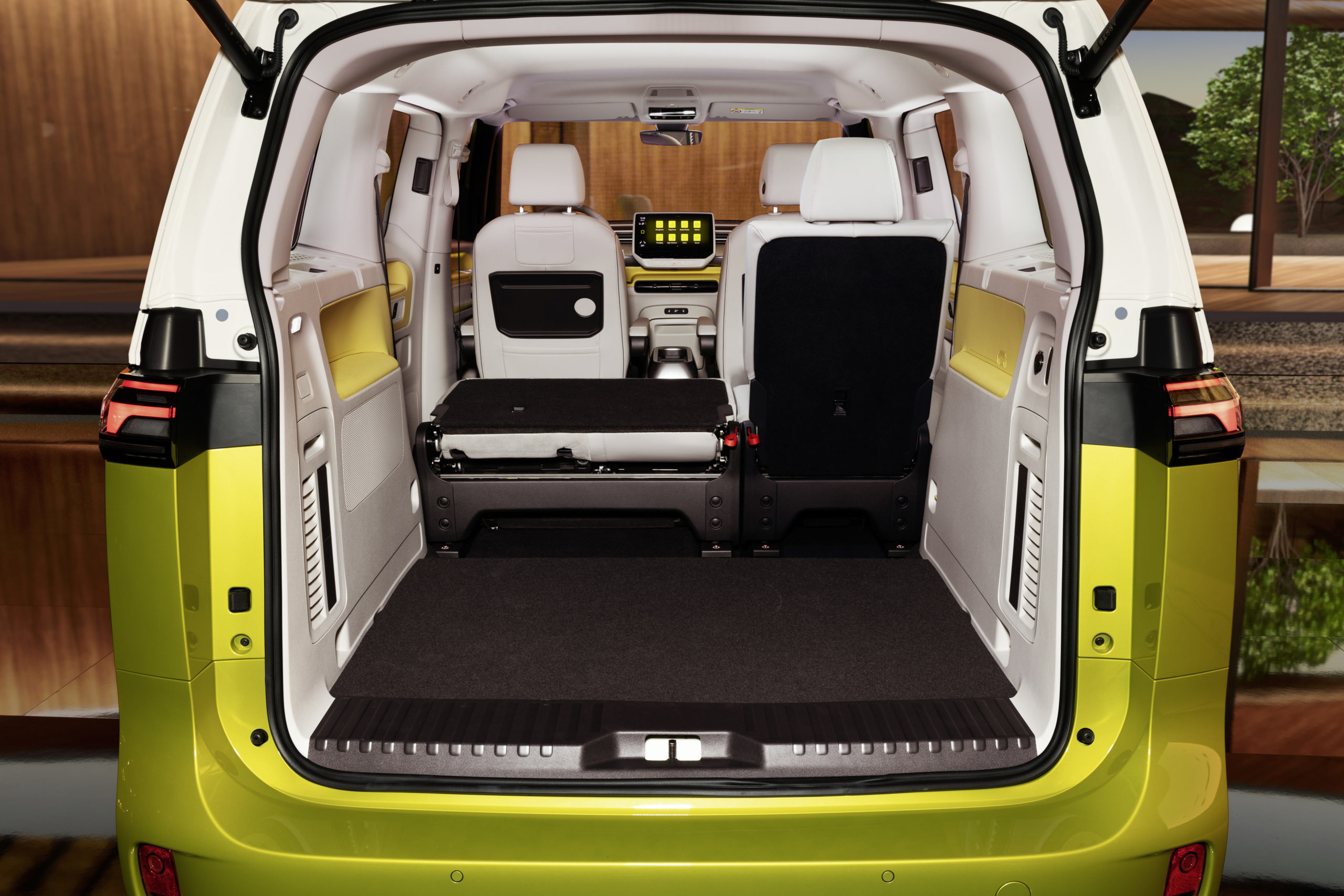
Volkswagen ID.Buzz
To further bolster VW’s green initiative, the Buzz features no leather in the upholstery, while the seat covers, and the floor and roof lining have been created using recycled materials.
Conventional driver-assist technologies like lane keep assist, front collision warning and ‘Dynamic Road Sign Display’ come as standard, and the Buzz will also be equipped with Travel Assist, which automatically helps occupants change lanes on the highway at speeds of 90 km/h or higher. Much of the ADAS tech on the BUZZ will also be also be showcased by a fleet of autonomous shuttles that “will be used for mobility services” at several European VW facilities from 2025 onwards.
